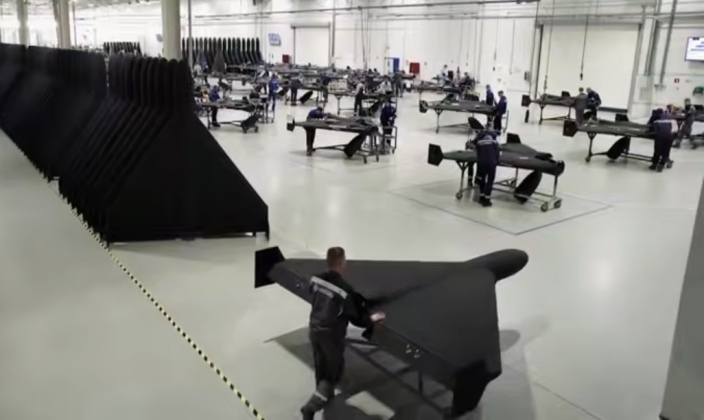News
Russia’s Kamikaze Drones Demonstrate Major New Targeting Capabilities as Production Expands
Russian Shahed-136 single use drones have demonstrated a new capability to strike dynamic moving targets near the frontlines, and have seen their ability grow to provide close air support for Russian ground forces. During a recent interview Lieutenant Colonel Arsen Dmytryk from the First Azov Corps of the National Guard of Ukraine reported that the drones are posing a growing threat to frontline units, highlighting that this may worsen significantly as production further expands. The drone’s successes have significant implications far beyond the Ukrainian theatre, at a time when the future of close air support remains in question, and as the utility of traditional close support aircraft like the American A-10 and Soviet Su-25 has been seriously diminished by advanced in air defence capabilities.

The growing ability of single use drones to dynamically seek out both stationary and moving targets inside Ukrainian territory has been pointed to by analysts as a potential game changer, and heavily compensates for the Russian Air Force’s lack of either robust long-range kill chains or air superiority. The integration of simple line-of-sight datalinks onto such aircraft has been pointed to as one potentially straightforward means of achieving this, and could make the Shahed-136 particularly effective in targeting rear logistics, artillery units, and air defence systems. The aircraft have also begun to be used to deploy PTM-3 anti-tank mines targeting Ukrainain supply routes, as first confirmed in August, with the aircraft’s range of up to 1000 kilometres allowing for mining deep behind the frontlines. The drones have had a growing impact on the ongoing conflict from September 2022, when they first began to be utilised after being purchased from Iran.

Beyond advances in the capabilities of the Shahed-136, the expansion of production has been key to ensuring that enough drones are available to be used against lower value battlefield targets. The Economist reportedin May that output of the the Shahed-136 had increased more than tenfold from 300 a month, to over 100 per day, with industry reported at the time to be on track to be able to produce 500 daily. When built under license in Russia, the aircraft is referred to as the Geran-2. The expansion of production has been a primary factor increasing pressure on Ukrainian air defences, with the Financial Times reporting in May: “Russia is now producing missiles and drones faster than it uses them, building up stockpiles and increasing pressure on Ukraine’s stretched defences.” Costing under $30,000 each, the drones provide a very low cost option for launching precision strikes. Efforts to expand production have reportedly been bolstered by the dispatch of approximately 25,000 North Korean industrial workers to Russia to man the expanding facilities.












